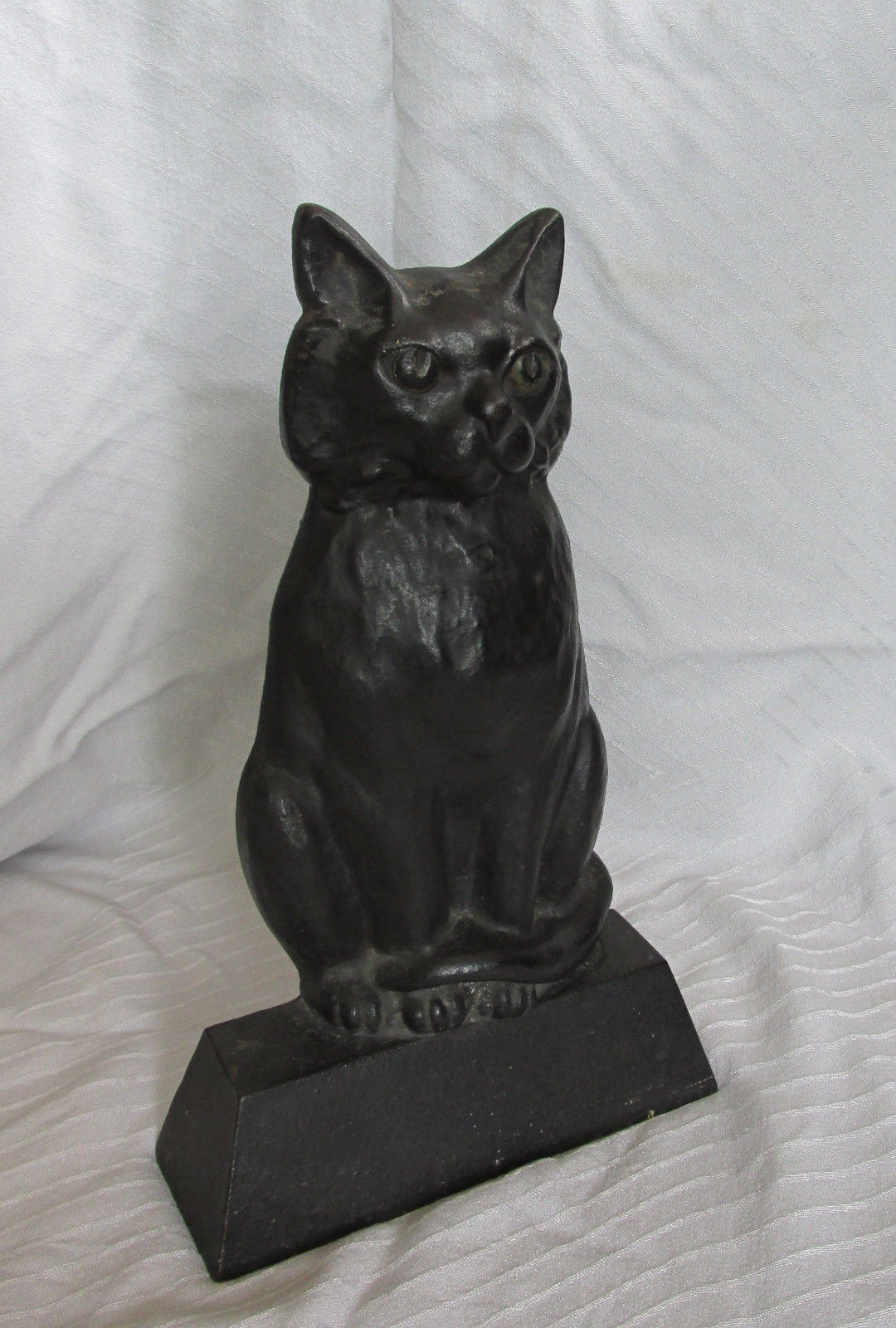
3748 – Cast Iron Black Cat
- Physical description:
- Large heavy black cat sitting upright on base looking forward. Hollow at the back
- Museum classification:
- Images of Witchcraft
- Size:
- 19cm x 31cm x 5cm
- Information:
The Cat
Witches are often shown with cats, which are usually black. They have a close relationship to them, they are familiar with them, they are like their family. This can be seen as a very positive relationship—a connection between two souls, one human and one animal. For many, animals are a connection with the natural world and the spirit world. Animals also serve as a reminder of the wonder of nature, the importance of all living things and their magical properties.
This association of witches and cats may go back as far as Ancient Egypt when cats and other animals were considered sacred and revered. Over time, this idea may have become diluted and altered into the witch and her cat. In Christian theology, human beings have souls and animals do not. God gave Adam dominion over the animals and respect for animals declined as they came to be seen as beasts of burden or food, not objects of veneration. People who had close relationships with animals gradually came to be seen as potentially dangerous.
The association of cats and witches is a curiously English phenomenon which seems to have begun in 1566 when Elizabeth Francis went on trial in Essex. Elizabeth, a farmer’s wife, confessed that her grandmother had taught her witchcraft, and given her a cat called Sathan who worked magic for her. She spoke to Sathan in ‘strange hollow voice’, whereupon he would change into a toad—he brought Elizabeth eighteen sheep, and even a husband. Elizabeth confessed to feeding the cat her blood.
During the persecution period (c. 1500-1700), witches were believed to be working with the Devil to do harm. A common belief was that he sent his spirits to them in animal form. The witch would then feed these animals her blood in exchange for magical powers. These spirits or familiars could be any animal: toads, mice, birds, ferrets, dogs, cats; or in another form such as a child or a greyhound with the head of an ox. Many different animals are mentioned in the accounts of the witch trials but the image which endured was of the witch with her cat familiar.


- Resource:
- Object
- Materials:
- Iron and paint
- Copyright ownership:
- Unknown
The Cat
Witches are often shown with cats, which are usually black. They have a close relationship to them, they are familiar with them, they are like their family. This can be seen as a very positive relationship—a connection between two souls, one human and one animal. For many, animals are a connection with the natural world and the spirit world. Animals also serve as a reminder of the wonder of nature, the importance of all living things and their magical properties.
This association of witches and cats may go back as far as Ancient Egypt when cats and other animals were considered sacred and revered. Over time, this idea may have become diluted and altered into the witch and her cat. In Christian theology, human beings have souls and animals do not. God gave Adam dominion over the animals and respect for animals declined as they came to be seen as beasts of burden or food, not objects of veneration. People who had close relationships with animals gradually came to be seen as potentially dangerous.
The association of cats and witches is a curiously English phenomenon which seems to have begun in 1566 when Elizabeth Francis went on trial in Essex. Elizabeth, a farmer’s wife, confessed that her grandmother had taught her witchcraft, and given her a cat called Sathan who worked magic for her. She spoke to Sathan in ‘strange hollow voice’, whereupon he would change into a toad—he brought Elizabeth eighteen sheep, and even a husband. Elizabeth confessed to feeding the cat her blood.
During the persecution period (c. 1500-1700), witches were believed to be working with the Devil to do harm. A common belief was that he sent his spirits to them in animal form. The witch would then feed these animals her blood in exchange for magical powers. These spirits or familiars could be any animal: toads, mice, birds, ferrets, dogs, cats; or in another form such as a child or a greyhound with the head of an ox. Many different animals are mentioned in the accounts of the witch trials but the image which endured was of the witch with her cat familiar.

